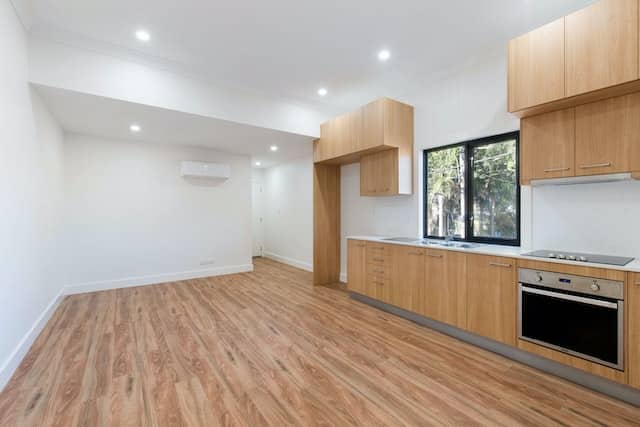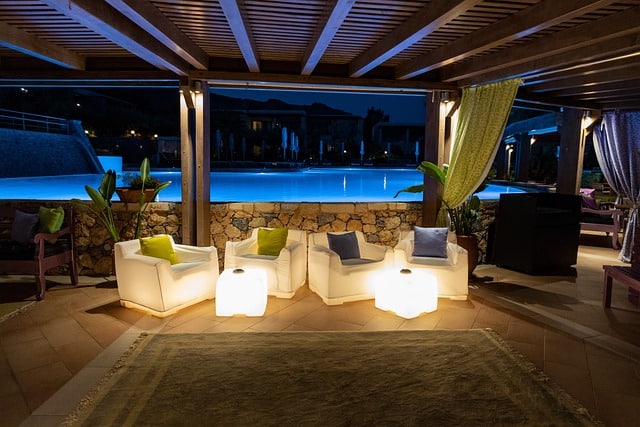Introduction – LEDs Are A New Era In Lighting
LED lights opened an era of smart lighting, which means people can control the light from their mobile phones or a remote controller. LED lights use less energy than ordinary bulbs due to their low power consumption and long life span.
Also, led lights have no mercury or lead, which makes them less troubling in terms of both short term safety in a home and long term safety as contaminants in trash. These advantages have recently made led lights very popular, especially in developed countries such as America, Canada, and Europe.

They are used not only for indoor illumination but also for outdoor illumination, like garden decoration or street lamps. Many companies even buy a large amount of led lights to save energy costs.
Compared with a traditional light source like bulb lamps, LED lights have more advantages and are more energy efficient. So many people think replacing traditional lights with LED ones is the best choice.
Do LED Lights Burn Out?
LED lights inevitably burn out, but they have an extremely long lifespan compared to traditional incandescent bulbs. While incandescent bulbs typically last 1,000 to 2,000 hours, LED lights can last anywhere from 25,000 to 50,000 hours. This means that a LED light used for 8 hours a day would last over five years before burning out, while an incandescent bulb would need to be replaced after just one year of use.
In addition, LEDs also tend to have a lower rate of decay, meaning the brightness and quality of the light does not significantly decrease until the end of its lifespan. However, it is important to note that LEDs can still burn out sooner if exposed to extreme heat or if used in a fixture with compatibility issues. Despite this, investing in LED lights can ultimately save time and money in the long run.
Why Do LED Lights Burn Out?
Since LED lights have no heated element like a tungsten fiber in a classical incandescent, it’s not exposed to the same kind of heat stress and therefore you don’t expect them to “burn out”. However, LEDs still rely on tiny electronic circuitry, so they are subject to physical defects, and therefore they still “burn out”. Very rarely, LED lights can burn out due to several different factors. For example, if LEDs are exposed to excessive heat or vibration, they may not last as long as they should. Additionally, LED lights used outside in very cold climates may be more likely to burn out sooner than those used indoors in warmer temperatures. Furthermore, incompatible fixtures and bulbs can also cause issues with the longevity of LED lights. Here are some other reasons:
High Voltage:
There is always the chance that a LED light is exposed to a high voltage, which may cause issues with the longevity of the LED. The electricity coming into your home should be around 230V at 50 Hz. If it is much higher, it could make your LED lights not last as long.
Low-Quality Bulbs:
If you are using cheap or low-quality LED bulbs, they may not be able to last as long as high-quality LEDs. Pay close attention to the specifications of each bulb and look for those with extended lifespan ratings, such as 25,000 hours or more. This will ensure that your lights will burn out less often over time.
Improper Installation:
A professional electrician should always install LED lights to ensure there is no risk of heat damage or vibration issues. If your LED lights are poorly installed and do not have proper protection against heat and vibration, they may burn out sooner than expected.
Incompatibility Issues:
If the electrical connectors on your LED lights do not match properly with your fixtures, this may also contribute to the prematurely burning out of your LEDs. To avoid this issue, always do your research before installing new LED lights to ensure compatibility between different components.
How Do LED Lights Work?
LED stands for “Light Emitting Diode”. The principles of the LED stretch all the way back to the first foundations of quantum mechanics, a branch of physics developed in the early 1900s. In the LED idea, light is generated from a controlled “step down” of an electron from high energy state to low energy state. In the process, a photon of light is generated. In contrast, incandescent lights generate light by adding energy in an undirected way to get the “filament” hot enough that the electrons in less controlled fashion skip up and down and release photon light.
The architecture of an LED are tiny semiconductor chips that emit light when an electrical current passes through them. These chips are usually encased in a plastic or glass cover to protect them from the elements, and they are typically connected in arrays or strings to form a complete lighting system. The unique properties of these semiconductor materials allow LED lights to produce bright, vibrant light while using very little energy, making them a more efficient alternative to traditional incandescent bulbs.
Additionally, LED lights have longer lifespans and lower decay rates than other types of lighting, making them ideal for applications where long-term durability is important. Overall, the superior efficiency and performance of LED lights make them an attractive choice for a wide range of lighting applications.
How To Prolong The Life Of LED Lights?
LED lights have a reputation for lasting longer than traditional light bulbs, but there are a few steps you can take to prolong their lifespan even further. First, check the wattage of your LED lights and match them with fixtures with the appropriate voltage. Using the wrong wattage can cause damage and decrease the lifespan of your LEDs.
Additionally, it’s important to keep your lights cool and avoid extreme temperatures as much as possible. Lastly, avoid frequently turning your LED lights on and off—while they can handle being switched on and off more than traditional bulbs, prolonging their “on” time will ensure a longer overall lifespan. With these tips in mind, you’ll be able to enjoy the benefits of LED lighting for many years to come.

What Happens When An LED Light Burns Out?
When a traditional lightbulb burns out, the filament inside breaks or becomes corroded, causing it to stop producing light; however, when an LED light burns out, it often doesn’t have a distinct moment of failure. Instead, it loses its brightness over time until it is no longer visible. One reason is that LEDs don’t have a filament that can break. Instead, they produce light through the movement of electrons in a semiconductor material.
As the LED ages and is used more frequently, these electrons can become trapped, reducing the overall brightness of the light. However, even after losing some brightness, an LED will often continue to function and will only need to be replaced when it has reached the end of its lifespan. So next time your LED lights seem dimmer than before, it may just be time for a replaceable upgrade.
In Conclusion
Despite these challenges, investing in high-quality LED lights that have been carefully tested and certified is generally a good way to minimize the risk of premature failure. Suppose you are concerned about the lifespan of your LED lights. In that case, it is also important to practice proper maintenance by testing them regularly for signs of damage or wear and replacing any faulty components immediately. While it may take a bit of extra effort, properly maintaining your LED lights can help you enjoy their many benefits and savings over the long term.
